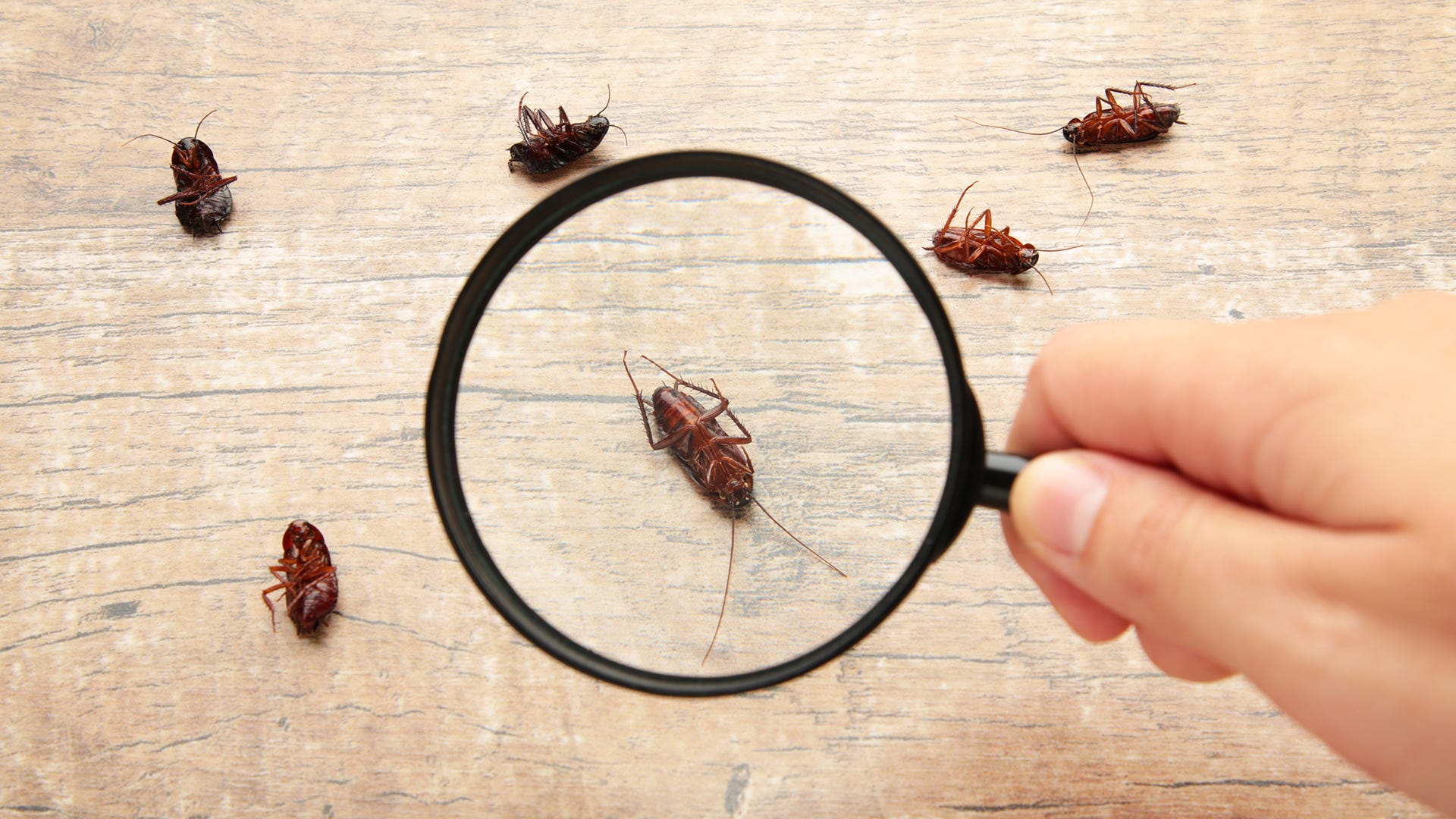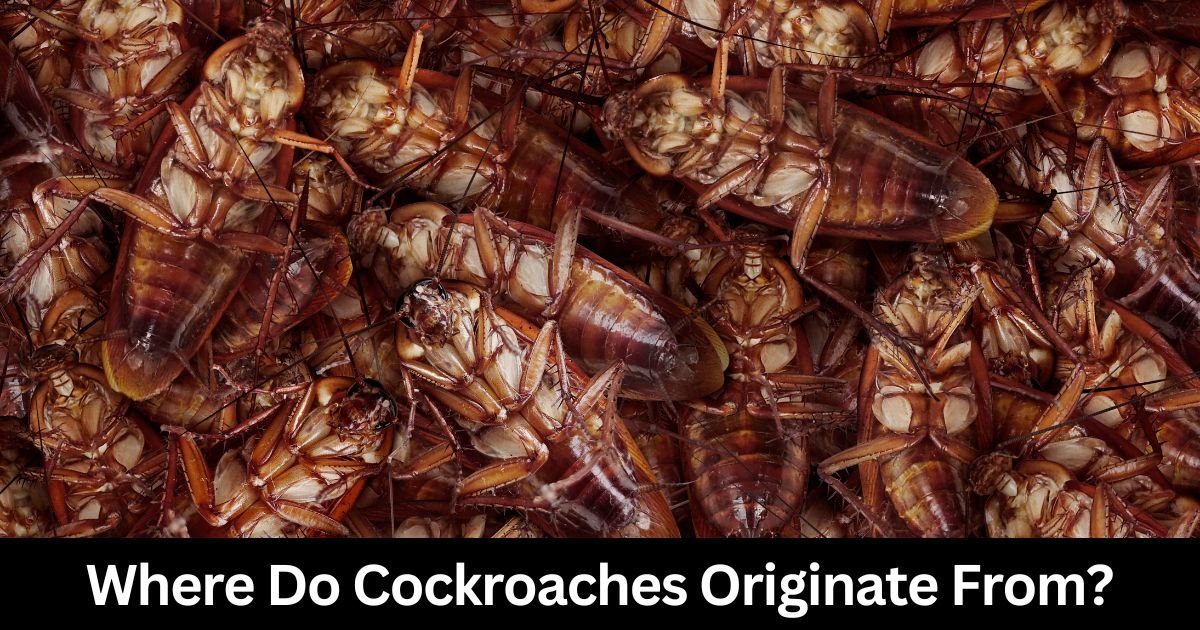Cockroaches originate from tropical regions and have adapted to cooler conditions due to their ability to survive in various temperatures. They are believed to have originated from tropical areas where they fed on decaying organic matter, leaf litter, and wood, and eventually adapted to thrive in human-inhabited spaces.
This adaptability and ability to consume almost anything have made them resilient and allowed them to survive in most locations except extreme polar regions. Their attraction to warmth, food residues, and moisture-rich environments further contributed to their widespread presence in human habitats, making it challenging to control their infestations.
Cockroaches’ evolutionary success and survival tactics have made them a global pest problem that requires effective management strategies for elimination and prevention.

Credit: www.ondemandpestcontrol.com
Evolution Of Cockroaches
Cockroaches originated from tropical regions and have adapted to survive in various temperatures. They are attracted to factors such as food, water, shelter, and warmth, making it easy for them to find sustenance in areas populated by humans.
Cockroaches have a long history dating back millions of years. These insects have evolved over time, adapting to various environments and surviving through different eras. Let’s delve into the evolutionary journey of these resilient creatures.
Ancestor Of Cockroaches
The origins of cockroaches trace back to ancient times, with their ancestors believed to have roamed the earth over 300 million years ago. These early ancestors of cockroaches thrived in tropical regions and gradually spread to different parts of the world.
Relation To Other Insects
Cockroaches are part of the insect order Blattodea, which also includes termites. Despite their close relation to termites, cockroaches have distinct characteristics that set them apart. These insects have unique adaptations that have allowed them to thrive in diverse habitats.
Adaptation To Different Environments
Cockroaches are known for their remarkable ability to adapt to various environments. They can withstand extreme conditions and are highly resilient to changes in their surroundings. From tropical regions to urban settings, cockroaches have demonstrated their adaptability and survival skills over centuries. In conclusion, the evolution of cockroaches showcases their resilience and ability to thrive in different ecosystems. These insects have come a long way from their ancient ancestors, adapting to new challenges and environments along the journey of evolution.
Habitat And Spread
Original Habitat Of Cockroaches
Cockroaches are believed to have originated from tropical regions and have adapted to various climates, including cooler conditions. Their ability to eat almost anything and survive in different temperatures has made it easy for them to find food, especially in areas inhabited by humans.
Spread To Different Continents
Cockroaches have spread to different continents due to their adaptability and ability to thrive in various environments. They have been carried by trade and commerce, finding new habitats in different parts of the world.
Factors Affecting Habitat Choice
- Food sources: Cockroaches are attracted to organic matter, leaf litter, and decaying plant material.
- Temperature: They can survive in most temperatures, except for extreme polar regions.
- Human habitats: Cockroaches are drawn to areas where food, water, shelter, and warmth are available, making human-inhabited spaces ideal for their survival.
Behavior And Physiology
Understanding the behavior and physiology of cockroaches can give us insights into their origins and how they have managed to survive for millions of years. Let’s explore three key aspects of their behavior and physiology: Nocturnal Behavior, Dietary Habits, and Survival Mechanisms.
Nocturnal Behavior
Cockroaches are primarily nocturnal creatures, meaning they are most active during the night. This behavior helps them avoid predators and reduces their chances of being detected by humans. During the day, they prefer to hide in dark and secluded areas such as cracks, crevices, and behind appliances. Their ability to adapt to and thrive in low-light conditions has contributed to their global presence.
Dietary Habits
Cockroaches are opportunistic omnivores, meaning they will eat almost anything. Their diet includes both plant and animal matter, including decaying organic material, food scraps, dead insects, and even glue. Their ability to digest a wide range of substances allows them to find sustenance in almost any environment, making them highly adaptable and resilient.
Survival Mechanisms
One of the reasons cockroaches have managed to survive for millions of years is due to their remarkable survival mechanisms. These include their ability to withstand extreme temperatures, their resistance to radiation and certain chemicals, and their remarkable reproductive capabilities. Cockroaches can reproduce quickly, with some species capable of producing hundreds of offspring in a short period. Additionally, they have a tough exoskeleton that provides protection and allows them to squeeze through tiny gaps and cracks, enabling them to seek shelter and escape from predators.

Credit: www.terro.com
Impact On Ecosystem
Cockroaches contribute significantly to ecosystems by playing vital roles in food chains, interacting with various species, and serving as decomposers.
Contribution To Ecosystems
- Cockroaches help in breaking down organic matter like leaf litter and wood.
- They play a crucial role in cleaning up degrading plant material.
- Their bodies trap atmospheric nitrogen during this process.
Role In Food Chains
- Cockroaches serve as food for many predators in the ecosystem.
- They contribute to maintaining the balance in the food chain.
- By being part of the food chain, they play a key role in nutrient cycling.
Interactions With Other Species
- Cockroaches interact with a wide range of species in their environment.
- They may compete with other insects for resources.
- Some species of cockroaches form symbiotic relationships with other organisms.
Interactions With Humans
Cockroaches have a long and storied history of interactions with humans. These resilient insects have made their presence known in human dwellings and have adapted to survive in various environments. Understanding their behavior and the ways they infiltrate our living spaces is crucial to effectively preventing infestations.
Roaches In Human Dwellings
Cockroaches have a knack for finding their way into human habitations and establishments, drawn by the abundance of food, water, and shelter that these places offer. They are adept at exploiting the environmental conditions and resources provided by human dwellings, making them unwelcome guests in households, commercial buildings, and other infrastructures.
Common Entry Points
These resilient pests can gain access to homes and buildings through various entry points, including small cracks, gaps around pipes, vents, and electrical conduits, as well as through open doors and windows. Their flexible bodies allow them to squeeze through tiny openings, making it challenging to secure a property against their intrusion.
Methods Of Prevention
- Seal off entry points by caulking gaps and crevices.
- Keep living spaces clean and free of food crumbs and spills.
- Store food in airtight containers and dispose of garbage regularly.
- Fix any plumbing leaks to reduce moisture sources.
- Consider professional pest control services for proactive measures.

Credit: www.domyown.com
Common Myths And Facts
- Cockroaches come from unclean environments only.
- Roaches can survive a nuclear blast.
- Cockroaches are harmful to humans due to their bites.
- Cockroaches have been around for millions of years.
- They can live without food for a month.
- Roaches are attracted to warmth and moisture.
| Belief | Fact |
|---|---|
| Cockroaches originate only from tropical regions. | Cockroaches can adapt to various climates, not just tropical regions. |
| Cockroaches are carriers of diseases. | Cockroaches can spread bacteria but are not major disease carriers themselves. |
| Cockroaches are only found in dirty places. | Cockroaches can thrive in clean environments too, given the availability of food and water. |
Cockroaches play a vital role in the ecosystem by aiding in the decomposition process. Despite the common myths surrounding them, these resilient creatures have adapted to a variety of habitats over time.
Frequently Asked Questions
Where Did The First Cockroach Come From?
Cockroaches originated in tropical regions and adapted to cooler conditions. They can survive in various temperatures and are attracted to food, water, shelter, and warmth. They can enter homes through pipes and plumbing, as well as through basements. Cockroaches evolved from a flying ancestor.
How Did Roaches Get To America?
Cockroaches likely arrived in America from tropical regions, adapting to human-inhabited areas. They are drawn to food, water, shelter, and warmth, and can make their way into buildings through pipes and plumbing. Roaches serve a purpose in cleaning up decaying plant materials and help trap atmospheric nitrogen.
Why Do Cockroaches Exist?
Cockroaches exist to clean up decaying matter and trap nitrogen, aiding in ecosystem maintenance.
Conclusion
Cockroaches likely originated from tropical regions, adapting to various climates due to their versatility in finding food and surviving in different temperatures. They are attracted to factors like food, water, shelter, and warmth, making human-inhabited areas ideal for them. Understanding their origins can help in effectively managing and controlling their presence.
Related posts:

I’m MD Tanvir, and I bring years of expertise gained from working closely with pest control companies to the forefront. My journey in the industry has inspired me to launch Bug Battler, a platform aimed at equipping people with the know-how to combat pests autonomously. Through Bug Battler, I aim to empower individuals with practical insights to tackle pest infestations effectively.

